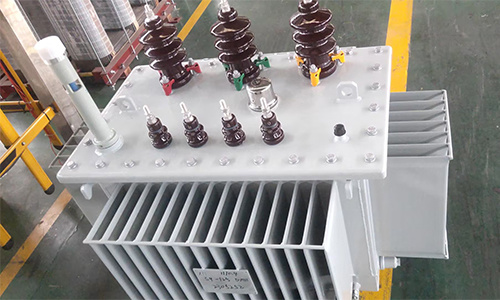Transformer Capacity Calculation and Selection Guide for Hotels
For hotel operators, ensuring a stable and sufficient power supply is the cornerstone of ensuring guest comfort and smooth hotel operations. Do you want to choose a transformer with the right capacity and voltage for your hotel but don't know where to start? TSTY Transformer Manufacturer will explain the calculation process for you based on an example of our customer and explore the key considerations for selection.
Reference example:
One of our customers in Ethiopia purchased a transformer for his hotel. He didn't know what capacity and voltage transformer to choose. After asking, we learned that his hotel had 50 rooms and each room was equipped with a 1hp air conditioner, an electric water heater, a TV and a fan.

1. Calculation of guest room power load
First, we need to calculate the power of all electrical equipment in the guest room and use a unified unit.
Air conditioning (1Hp): Metric horsepower (Hp) is a common power unit for air conditioning. According to the definition of the National Institute of Standards and Technology (NIST), 1 Hp = 0.746 kW. Therefore, air conditioning power = 0.746 kW.
Electric water heater: The power range of common guest room storage water heaters is usually between 1.2 kW and 1.8 kW. Take an intermediate value of 1.5 kW.
TV: Modern LCD TVs generally have low power consumption. Refer to the typical power consumption of ENERGY STAR certified TVs and take 0.1 kW (100W).
Fan (ceiling fan/exhaust fan): The power of a standard guest room fan is usually around 0.05 kW (50W).
Total power of guest room equipment:
0.746 kW (air conditioner) + 1.5 kW (water heater) + 0.1 kW (TV) + 0.05 kW (fan) = 2.396 kW
2. Introducing the demand factor
However, not all electrical appliances in the guest room will run at maximum power at the same time. The air conditioner may work intermittently, and the time when guests use the water heater and watch TV is also random. Therefore, when calculating the total power load of places such as hotels, the core concept of demand factor (DF) must be introduced.
According to the provisions of the National Electrical Code for hotel rooms in the United States and the practical experience of the IEEE Power System Engineering Reference Manual, the recommended range of the demand factor for hotel rooms equipped with electric water heaters, kitchen facilities and air conditioners is usually between 0.7 and 0.8. Here we use a conservative value of 0.7.
Calculate the calculated load of each room (After Demand Factor): 2.396 kW * 0.7 ≈ 1.677 kW
3. Calculation of total hotel load
Total calculated load of 50 hotel rooms (active power): 1.677 kW/room * 50 rooms = 83.85 kW
Transformer capacity is usually measured in kilovolt-amperes (kVA). Electric energy includes active power (kW) and reactive power (kvar). The equipment nameplate indicates the active power (kW), but the transformer needs to bear the total capacity of both (apparent power, kVA). The relationship between active power (kW) and apparent power (kVA) is determined by the power factor (PF):
Apparent power (kVA) = active power (kW) / power factor (PF)
The typical power factor of hotel loads is about 0.85.
Calculate the minimum required transformer capacity (kVA): 83.85 kW / 0.85 ≈ 98.65 kVA
3. Transformer capacity and voltage selection
Based on the calculation results, we need to select from the standard transformer capacity sequence:
100 kVA: Closest to the calculated value (98.65 kVA).
125 kVA: The next common specification.


The medium voltage distribution voltage in Ethiopia is usually 15kv and 33kv. After asking the customer, we learned that the medium voltage distribution voltage used in the area where his hotel is located is 33kv. Therefore, the TSTY transformer manufacturer recommended that the customer choose a 125kva 33kv transformer for his hotel.
Key reasons for choosing a 125 kVA transformer:
1. Safety margin and long-term reliability: Long-term full-load operation of the transformer will significantly shorten its life, increase losses and failure risks. Electrical engineering practices (such as the IEC 60076 series of standards) strongly recommend retaining a reasonable margin. The load rate of a 100 kVA transformer has reached 98.65% at a demand of 98.65 kVA, far exceeding the recommended value.
2. Reserve for future development: The hotel may upgrade equipment (such as higher-power air conditioners, smart bathrooms), increase public area loads (lighting, elevators, kitchens), or expand the number of rooms. 125 kVA provides about 26% of expansion space, which is more forward-looking.
3. Dealing with non-linear loads: Modern switching power supplies (TVs, chargers) generate harmonic currents, which increase transformer losses and heat. Larger capacity transformers are more tolerant (reference: IEEE Std 519-2014 - IEEE Recommended Practice and Requirements for Harmonic Control in Electric Power Systems).
4. Efficiency optimization: Transformers are usually most efficient in the range of 60%-80% of rated load. A 125kVA transformer operates at about 67% (83.85kW corresponds to about 98.65kVA) load, which may be closer to the high efficiency zone.
The above introduces the calculation process of transformer selection through a customer case in Ethiopia. If you want to choose a transformer with the right capacity and voltage for your project, you can refer to the above calculation process. If you don’t know how to calculate, please contact the TSTY transformer manufacturer and we will select the right model of equipment for you.

